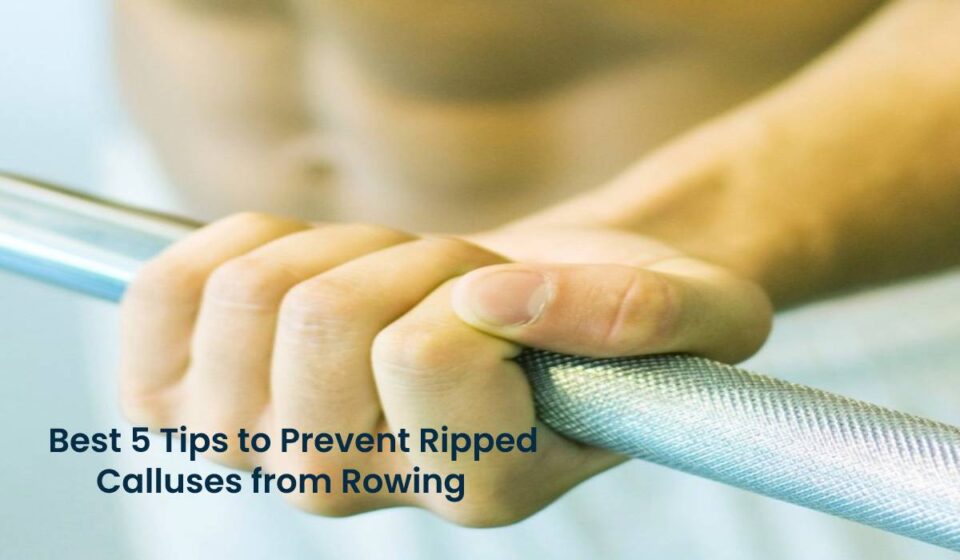Introduction Prevent Ripped Calluses
Rowing is a sport that puts a lot of stress on your hands. Ripped Calluses formation are very common while rowing. Rowing regularly helps in strengthening your body specially shoulders, arms, and back muscles as well as your hamstrings and glutes. Rowing helps strengthen your core muscles.
Table of Contents.
Did you know rower’s hands aren’t soft and smooth? Well, they should not be. The reason behind it is that the oar is gripped tightly and pressure is applied while the oar is moved through the water. This leads to calluses, a protective layer of skin at the point of contact between the oar and the hand.
What are Rowing Calluses?
Rowing Calluses are calluses that occur during rowing either on a boat, kayak or on a rowing machine. Two common types of rowing calluses happen on the hands and on the buttocks. Calluses on the hand occur due to the constant friction and pressure between the skin of your hands and the oar used in rowing, this could be due to overuse or having too tight of a grip. Calluses on the buttocks occur due to the constant friction between your buttocks on the seat while rowing. Both of these types of calluses are accelerated and can become worse if your skin is wet.
Why do Ripped Calluses Occur?
Calluses occur for various reasons, it can happen due to an increase in your workout time, using rowing for the first time, or going back to using a rowing machine after a long gap. Therefore, it is necessary to learn how to prevent and deal with calluses. Necessary precautions may help prevent your hand calluses from ripping and allow you to work out at your best.
How do you Prevent Ripped Calluses when Rowing?
If you are suffering from ripped calluses due to callus build up, be careful about suddenly increasing the duration of your rows. Especially in hot or wet conditions which accelerate callus formation.
The most important key point is to increase your rowing time gradually. Also, avoid allowing your calluses get too profuse. You should use a hand callus remover tool to grind or sand the top layer of dead skin when necessary.
To prevent ripped or big calluses, we need to understand the telltale signs that cause calluses. These are the main reasons why calluses form:
- Improper grip
- Increased rowing duration
- Sweat and moisture on your hands or at the handle.
Please check This: hand callus remover tool
Tips to take care of your Hands as a Rower?
1. Wash your hands after rowing or using a rowing machine.
While rowing all that backsplash-canal-water that hits your hands has all sorts of bacteria in it and makes the oar slippery. And you don’t know if the handle of the rowing is wiped down after the last person used it or not.
Tips for You: You should wipe down the rowing machine before using it to prevent your calluses and open/bare skin wound from bacteria.
2. Cut off flaps of skin.
If there is a flap of skin that irritates you or it is open enough to let sand underneath, remove it with a hand callus remover tool. Don’t take the risk with scissors, nail clipper, remove it professionally with tool. You should not leave it because bits of dirt and grit will end up underneath it.
Tips for You: You should not use a bandage while the skin is still raw, but only do this while rowing as needed. When you are not paddling, allow the raw skin to dry so that quickly it will start to heal up and not hurt.
3. Use antibiotic ointment.
You can apply antibiotic ointment twice a day. You can also use a healing salve to treat your calluses at a time with happiness. Not only calluses, but healing salves also treat rips, dry or cracked skin.
4. Don’t pick at them.
If you try to remove your calluses with your fingernails, you’ll just have to build them back later. Avoid it, if your skin is protected, don’t open it up.
5. Always hold the oar properly.
The most important and essential point to prevent calluses is by adjusting your grip. You can do it by adjusting your thumbs to the top of the handle, instead of the bottom where they belong. It helps avoid putting pressure on certain areas, you’ll likely get calluses. Therefore it’s important to focus on improving rowing techniques and let the calluses improve themselves. You can ask your coach the perfect technique of holding the oar properly.
Also read: How to Help Seniors Stay Active And Live Healthy Life
Final Words Prevent Ripped Calluses:
Rowing is a great sport that helps strengthen muscles. However, calluses play a major role in it. Proper gripping techniques and taking care of your hands by following the above guide is the best way to trim the callus build up and prevent ripped calluses.


